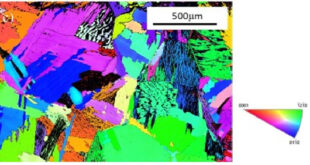Significance Statement
For more precise and correct calculation of hydrodynamic parameters of porous high-thermal-conductivity elements at moving through them vapour-liquid two-phase flows, it is necessary to know the structure and values of characteristics of such flow. The paper provides calculated data for the two-phase flow characteristics such as a functions of relative phase permeabilities, the parameter of saturation for a porous material with the liquid phase, two-phase parameter, and the true speeds of filtration of the liquid and vapour phases of the porous material, by combining and analyzing the two known existing methods of calculation of hydraulic resistance of two-phase flow in porous channels (the Masket-Leverette and Lockhart-Martinelli methods). The article shows that these characteristics depend on the whole complex of regime – design parameters of the model: on the mass flow rate of vapour in the two-phase flow, on characteristics of the porous sample, on Reynolds number of the initial liquid flow, on the thermophysical properties of liquid and vapour at the saturation line. In addition, in the article there was derived interpolation dependence of saturation of porous sample with liquid phase on the basic regime – design parameters of the model.
Journal Reference
P. Lukisha. Journal of Engineering Physics and Thermophysics, March 2014, Volume 87, Issue 2, pp 427-442.
Institute of Geotechnical Mechanics, National Academy of Sciences of Ukraine, 2a Simferopol’skaya Str., Dnepropetrovsk, 49005, Ukraine.
Abstract
This paper presents the calculation data for the functions of relative phase permeabilities, the parameter of saturation for a porous material with the liquid phase and the two-phase parameter, as well as of the true speeds of filtration of the liquid and vapor phases of the porous material obtained with the use of a combination and analysis of two existing methods for calculating the hydrodynamical drag in the two-phase vapor-liquid flow in porous media — the Masket–Laverette and Lockhart–Martinelli methods. It has been shown that the dependence of the above quantities on the main regime-design parameters of porous heat-transfer elements is more complex and multiparametric than was thought before. On the basis of the calculation data, an interpolation dependence has been obtained for determining the parameter of saturation of porous samples with the liquid phase depending on the main regimedesign parameters of the model
Go To Journal of Engineering Physics and Thermophysics
 Advances in Engineering Advances in Engineering features breaking research judged by Advances in Engineering advisory team to be of key importance in the Engineering field. Papers are selected from over 10,000 published each week from most peer reviewed journals.
Advances in Engineering Advances in Engineering features breaking research judged by Advances in Engineering advisory team to be of key importance in the Engineering field. Papers are selected from over 10,000 published each week from most peer reviewed journals.


